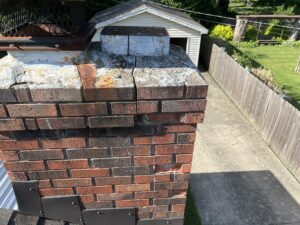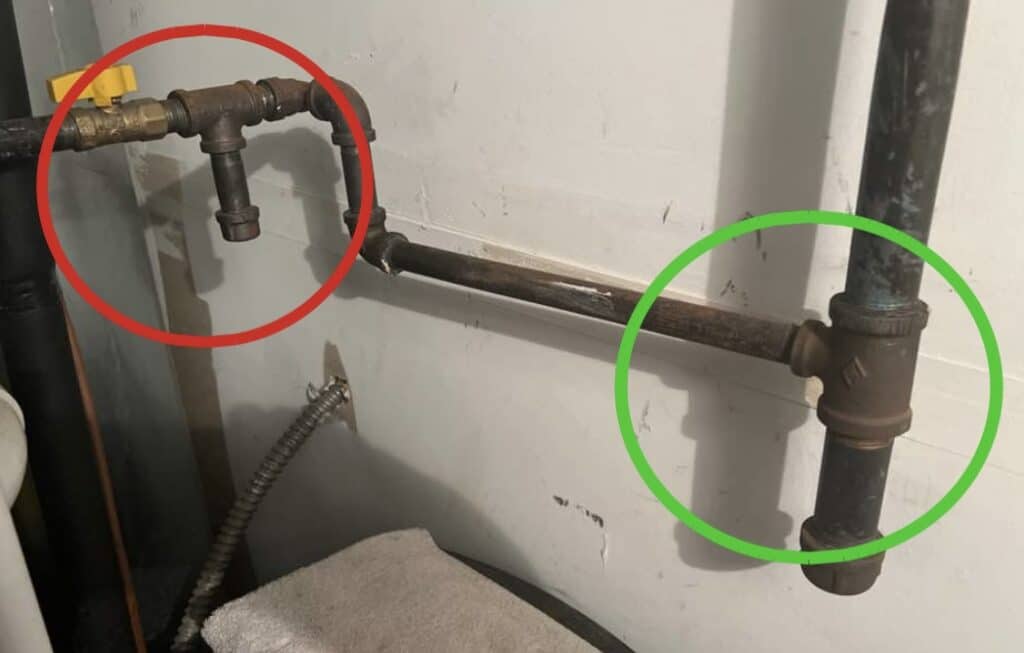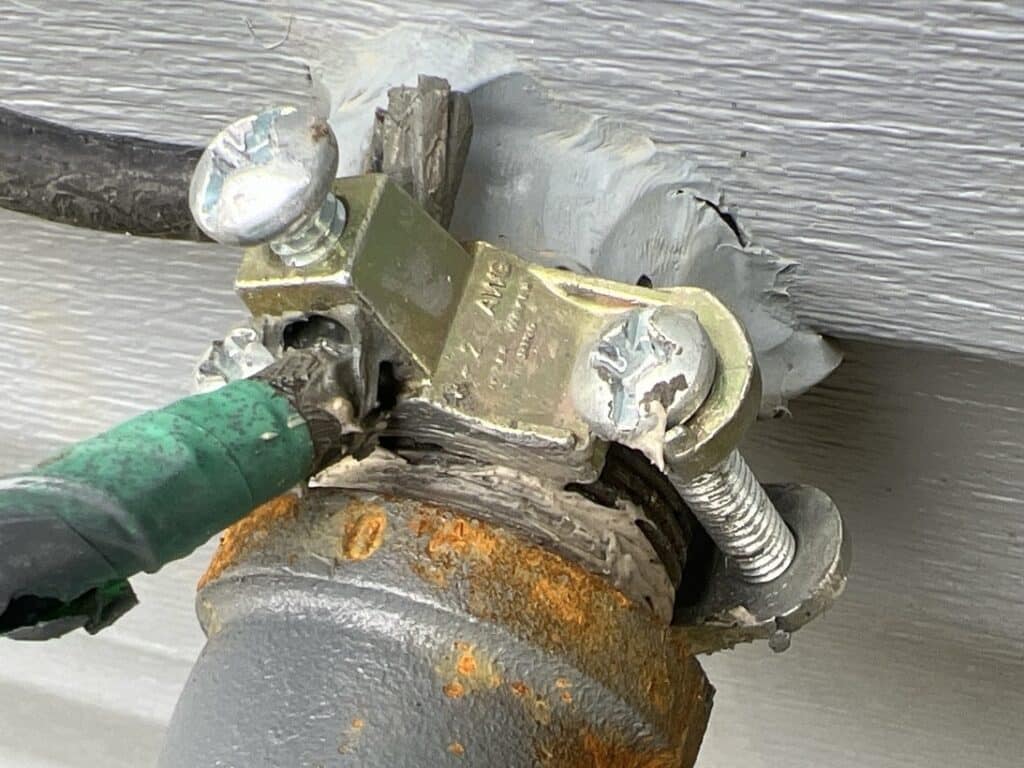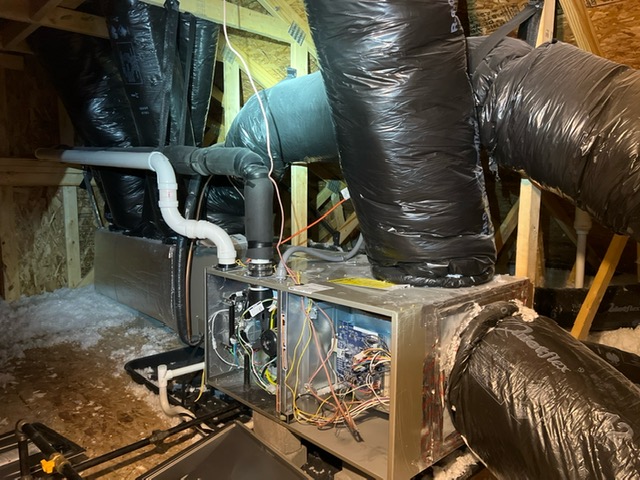 Brick chimneys need regular attention and maintenance, neither of which appears to be given to most of them. It is more common to find problems with brick chimneys than not, all of which can be expensive. Price is also based on accessibility, steepness of the roof, height of the roof and of the chimney, dangerous working conditions, be on lift rental, will all add substantial cost to the job.
Brick chimneys need regular attention and maintenance, neither of which appears to be given to most of them. It is more common to find problems with brick chimneys than not, all of which can be expensive. Price is also based on accessibility, steepness of the roof, height of the roof and of the chimney, dangerous working conditions, be on lift rental, will all add substantial cost to the job.A single story ranch with a low pitched roof will be the easiest to work on.
LOOKING at the photo:
1) The clay flue pipe sticking out the top is cracked, and while a top liner can be replaced. Contractors no longer replace damaged liners that are further down the chimney. Instead a flexible stainless steel pipe is inserted and customized to fit. These liners require annual cleaning if regularly used to prevent decay.
1) The clay flue pipe sticking out the top is cracked, and while a top liner can be replaced. Contractors no longer replace damaged liners that are further down the chimney. Instead a flexible stainless steel pipe is inserted and customized to fit. These liners require annual cleaning if regularly used to prevent decay.
2) The concrete on the top of the chimney called the crown is cracked and deteriorating. Cracks can be sealed, slightly damaged crowns can be repaired with a flex crown a flexible coating, badly deteriorated crowns have to be removed and rebuilt. Joints between the crown and the brick and between the crown and the liner should be sealed.
3) Look at the bricks and there are a few that are spalling, the front of the brick breaking away. This is always an issue with older soft bricks from the 1800’s and early 1900’s, they are easily weathered by rain and wind. Newer hard bricks are damaged by water that gets into them and freezes, expanding and damaging the brick. A damaged brick can be removed and replaced quite quickly.
4) The aluminum flashing on the bottom at the joint to the roof referrer to as step flashing due to its steps on the brick. To make a joint the mortar between the bricks at the top of each step is cut out and a fold in the top of the aluminum inserted and sealed (held in place) by refilling the joint with mortar or a caulk sealant.
Maintenance: chimneys face undue hardship due to the way wind blows over a roof, rain water is forced into the brick slowly weathering it. This is easily addressed by waterproofing the whole chimney once every 5-7 years with a clear quality breathable sealant (See our FAQ Sealants for more info) Note: Do not use silicone caulk on brick chimneys, it’s great while it lasts. Unfortunately nothing including new silicone caulk will stick to it when further repair is needed. For temporary crack repairs use roofing tar in a caulk tube: it’s easily removed by the brick mason.
Maintenance: chimneys face undue hardship due to the way wind blows over a roof, rain water is forced into the brick slowly weathering it. This is easily addressed by waterproofing the whole chimney once every 5-7 years with a clear quality breathable sealant (See our FAQ Sealants for more info) Note: Do not use silicone caulk on brick chimneys, it’s great while it lasts. Unfortunately nothing including new silicone caulk will stick to it when further repair is needed. For temporary crack repairs use roofing tar in a caulk tube: it’s easily removed by the brick mason.







Leave a Reply